1913 items found
Page 122 of 160
-
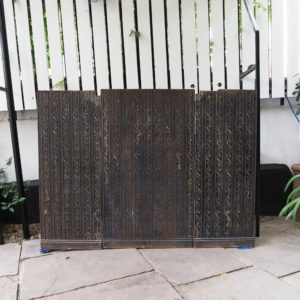
Cast iron fireplace interior
£800 -
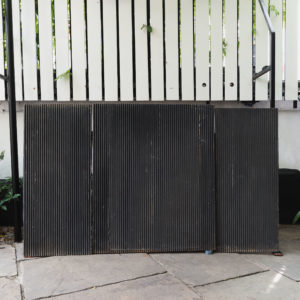
Ribbed iron fireplace interior
£800 -
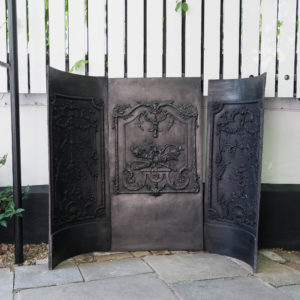
French cast iron fireplace interior panels
£1,800French cast iron fireplace interior panels
three sections, in the Louis XVI style. Height 115cm, central panel 61cm width, the two curved cheeks, corner to corner width, 47cm.£1,800 -
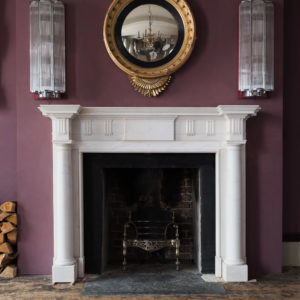
George III style Statuary marble Doric order chimneypiece
£18,000George III style Statuary marble Doric order chimneypiece
the moulded breakfront shelf above central plain plaque, the frieze with triglyphs and plain metopes, with engaged columnar jambs on footblocks. Late nineteenth century in the early George III manner.£18,000 -

Natural History of Carolina, Florida and the Bahama Islands, published 1729 – 1747.
£225Natural History of Carolina, Florida and the Bahama Islands, published 1729 – 1747.
Mark Catesby was born in Essex to a family owned a farm and house, Holgate, in Sudbury, Suffolk. His acquaintance with the naturalist Reverend John Ray, a leading English naturalist of the late 17th century and co-author of an early classic study on birds started Catesby’s life-long becoming interest in natural history, which he went on to study in London. His life changes when in 1712, he arrived at Williamsburg, Virginia, accompanying his married sister Elizabeth Cocke and two of her children. During his seven-year stay in Virginia that Catesby developed a passionate in the native flora and fauna. He began collecting botanical specimens, especially seeds, and sending them to friends in England and he met William Byrd II, who was an amateur naturalist, a member of the colonial Council and a Fellow of the Royal Society. When he returned to England in 1719, influential members of the Royal Society, then chaired by Sir Isaac Newton, had learned of his work in the colonies. Led by William Sherard, “one of the most celebrated botanists of the age,” members began soliciting sponsors to finance Catesby for a botanical expedition to South Carolina. By 1722, Catesby was again crossing the Atlantic to further his work in the New World. Catesby, was one of the first people to recognize how natural and man-made destruction and depredation of a species’ habitat lead to extinction. He was the first to depict birds, in conjunction with environmentally relevant plants. He returned to England in 1726, and then spent the subsequent two decades years developing his work that would eventually be published as, “The Natural History of Carolina, Florida, and the Bahama Islands” It was first fully illustrated study of the natural history of North America and the most comprehensive to date. Working virtually alone, Catesby personally oversaw every aspect of the work’s production, even learning the difficult art of etching on copper plates. To finance this expensive printing project, Catesby sought subscriptions, offering his book in sections of 20 plates to be published every four months. Published in eleven sections and featuring more than 220 hand-coloured etchings. Published in eleven sections and featuring more than 220 hand-coloured etchings. He personally presented the first section to Her Majesty Queen Caroline in May 1729, and later he dedicated the first volume of the Natural History to her. Following a collapse, Mark Catesby died at his home on Old Street, London, on 23 December 1749, and he was buried in the churchyard of St Luke’s Church£225 -

Natural History of Carolina, Florida and the Bahama Islands, published 1729 – 1747.
£225Natural History of Carolina, Florida and the Bahama Islands, published 1729 – 1747.
Mark Catesby was born in Essex to a family owned a farm and house, Holgate, in Sudbury, Suffolk. His acquaintance with the naturalist Reverend John Ray, a leading English naturalist of the late 17th century and co-author of an early classic study on birds started Catesby’s life-long becoming interest in natural history, which he went on to study in London. His life changes when in 1712, he arrived at Williamsburg, Virginia, accompanying his married sister Elizabeth Cocke and two of her children. During his seven-year stay in Virginia that Catesby developed a passionate in the native flora and fauna. He began collecting botanical specimens, especially seeds, and sending them to friends in England and he met William Byrd II, who was an amateur naturalist, a member of the colonial Council and a Fellow of the Royal Society. When he returned to England in 1719, influential members of the Royal Society, then chaired by Sir Isaac Newton, had learned of his work in the colonies. Led by William Sherard, “one of the most celebrated botanists of the age,” members began soliciting sponsors to finance Catesby for a botanical expedition to South Carolina. By 1722, Catesby was again crossing the Atlantic to further his work in the New World. Catesby, was one of the first people to recognize how natural and man-made destruction and depredation of a species’ habitat lead to extinction. He was the first to depict birds, in conjunction with environmentally relevant plants. He returned to England in 1726, and then spent the subsequent two decades years developing his work that would eventually be published as, “The Natural History of Carolina, Florida, and the Bahama Islands” It was first fully illustrated study of the natural history of North America and the most comprehensive to date. Working virtually alone, Catesby personally oversaw every aspect of the work’s production, even learning the difficult art of etching on copper plates. To finance this expensive printing project, Catesby sought subscriptions, offering his book in sections of 20 plates to be published every four months. Published in eleven sections and featuring more than 220 hand-coloured etchings. Published in eleven sections and featuring more than 220 hand-coloured etchings. He personally presented the first section to Her Majesty Queen Caroline in May 1729, and later he dedicated the first volume of the Natural History to her. Following a collapse, Mark Catesby died at his home on Old Street, London, on 23 December 1749, and he was buried in the churchyard of St Luke’s Church£225 -
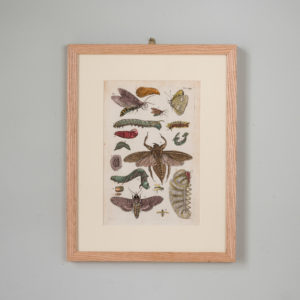
Natural History of Carolina, Florida and the Bahama Islands, published 1729 – 1747.
£225Natural History of Carolina, Florida and the Bahama Islands, published 1729 – 1747.
Mark Catesby was born in Essex to a family owned a farm and house, Holgate, in Sudbury, Suffolk. His acquaintance with the naturalist Reverend John Ray, a leading English naturalist of the late 17th century and co-author of an early classic study on birds started Catesby’s life-long becoming interest in natural history, which he went on to study in London. His life changes when in 1712, he arrived at Williamsburg, Virginia, accompanying his married sister Elizabeth Cocke and two of her children. During his seven-year stay in Virginia that Catesby developed a passionate in the native flora and fauna. He began collecting botanical specimens, especially seeds, and sending them to friends in England and he met William Byrd II, who was an amateur naturalist, a member of the colonial Council and a Fellow of the Royal Society. When he returned to England in 1719, influential members of the Royal Society, then chaired by Sir Isaac Newton, had learned of his work in the colonies. Led by William Sherard, “one of the most celebrated botanists of the age,” members began soliciting sponsors to finance Catesby for a botanical expedition to South Carolina. By 1722, Catesby was again crossing the Atlantic to further his work in the New World. Catesby, was one of the first people to recognize how natural and man-made destruction and depredation of a species’ habitat lead to extinction. He was the first to depict birds, in conjunction with environmentally relevant plants. He returned to England in 1726, and then spent the subsequent two decades years developing his work that would eventually be published as, “The Natural History of Carolina, Florida, and the Bahama Islands” It was first fully illustrated study of the natural history of North America and the most comprehensive to date. Working virtually alone, Catesby personally oversaw every aspect of the work’s production, even learning the difficult art of etching on copper plates. To finance this expensive printing project, Catesby sought subscriptions, offering his book in sections of 20 plates to be published every four months. Published in eleven sections and featuring more than 220 hand-coloured etchings. Published in eleven sections and featuring more than 220 hand-coloured etchings. He personally presented the first section to Her Majesty Queen Caroline in May 1729, and later he dedicated the first volume of the Natural History to her. Following a collapse, Mark Catesby died at his home on Old Street, London, on 23 December 1749, and he was buried in the churchyard of St Luke’s Church£225 -
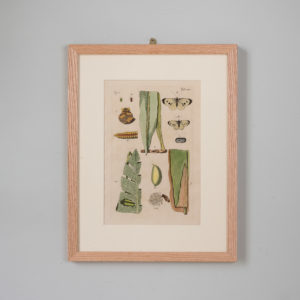
Natural History of Carolina, Florida and the Bahama Islands, published 1729 – 1747.
£225Natural History of Carolina, Florida and the Bahama Islands, published 1729 – 1747.
Mark Catesby was born in Essex to a family owned a farm and house, Holgate, in Sudbury, Suffolk. His acquaintance with the naturalist Reverend John Ray, a leading English naturalist of the late 17th century and co-author of an early classic study on birds started Catesby’s life-long becoming interest in natural history, which he went on to study in London. His life changes when in 1712, he arrived at Williamsburg, Virginia, accompanying his married sister Elizabeth Cocke and two of her children. During his seven-year stay in Virginia that Catesby developed a passionate in the native flora and fauna. He began collecting botanical specimens, especially seeds, and sending them to friends in England and he met William Byrd II, who was an amateur naturalist, a member of the colonial Council and a Fellow of the Royal Society. When he returned to England in 1719, influential members of the Royal Society, then chaired by Sir Isaac Newton, had learned of his work in the colonies. Led by William Sherard, “one of the most celebrated botanists of the age,” members began soliciting sponsors to finance Catesby for a botanical expedition to South Carolina. By 1722, Catesby was again crossing the Atlantic to further his work in the New World. Catesby, was one of the first people to recognize how natural and man-made destruction and depredation of a species’ habitat lead to extinction. He was the first to depict birds, in conjunction with environmentally relevant plants. He returned to England in 1726, and then spent the subsequent two decades years developing his work that would eventually be published as, “The Natural History of Carolina, Florida, and the Bahama Islands” It was first fully illustrated study of the natural history of North America and the most comprehensive to date. Working virtually alone, Catesby personally oversaw every aspect of the work’s production, even learning the difficult art of etching on copper plates. To finance this expensive printing project, Catesby sought subscriptions, offering his book in sections of 20 plates to be published every four months. Published in eleven sections and featuring more than 220 hand-coloured etchings. Published in eleven sections and featuring more than 220 hand-coloured etchings. He personally presented the first section to Her Majesty Queen Caroline in May 1729, and later he dedicated the first volume of the Natural History to her. Following a collapse, Mark Catesby died at his home on Old Street, London, on 23 December 1749, and he was buried in the churchyard of St Luke’s Church£225 -
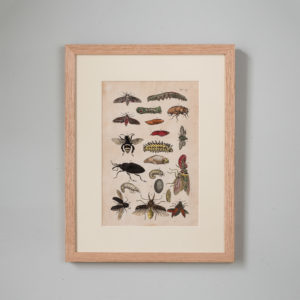
Natural History of Carolina, Florida and the Bahama Islands, published 1729 – 1747.
£225Natural History of Carolina, Florida and the Bahama Islands, published 1729 – 1747.
Mark Catesby was born in Essex to a family owned a farm and house, Holgate, in Sudbury, Suffolk. His acquaintance with the naturalist Reverend John Ray, a leading English naturalist of the late 17th century and co-author of an early classic study on birds started Catesby’s life-long becoming interest in natural history, which he went on to study in London. His life changes when in 1712, he arrived at Williamsburg, Virginia, accompanying his married sister Elizabeth Cocke and two of her children. During his seven-year stay in Virginia that Catesby developed a passionate in the native flora and fauna. He began collecting botanical specimens, especially seeds, and sending them to friends in England and he met William Byrd II, who was an amateur naturalist, a member of the colonial Council and a Fellow of the Royal Society. When he returned to England in 1719, influential members of the Royal Society, then chaired by Sir Isaac Newton, had learned of his work in the colonies. Led by William Sherard, “one of the most celebrated botanists of the age,” members began soliciting sponsors to finance Catesby for a botanical expedition to South Carolina. By 1722, Catesby was again crossing the Atlantic to further his work in the New World. Catesby, was one of the first people to recognize how natural and man-made destruction and depredation of a species’ habitat lead to extinction. He was the first to depict birds, in conjunction with environmentally relevant plants. He returned to England in 1726, and then spent the subsequent two decades years developing his work that would eventually be published as, “The Natural History of Carolina, Florida, and the Bahama Islands” It was first fully illustrated study of the natural history of North America and the most comprehensive to date. Working virtually alone, Catesby personally oversaw every aspect of the work’s production, even learning the difficult art of etching on copper plates. To finance this expensive printing project, Catesby sought subscriptions, offering his book in sections of 20 plates to be published every four months. Published in eleven sections and featuring more than 220 hand-coloured etchings. Published in eleven sections and featuring more than 220 hand-coloured etchings. He personally presented the first section to Her Majesty Queen Caroline in May 1729, and later he dedicated the first volume of the Natural History to her. Following a collapse, Mark Catesby died at his home on Old Street, London, on 23 December 1749, and he was buried in the churchyard of St Luke’s Church£225 -
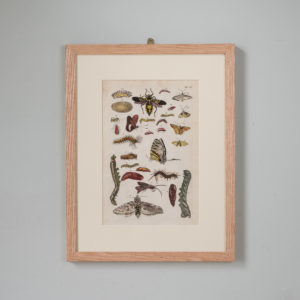
Natural History of Carolina, Florida and the Bahama Islands, published 1729 – 1747.
£225Natural History of Carolina, Florida and the Bahama Islands, published 1729 – 1747.
Mark Catesby was born in Essex to a family owned a farm and house, Holgate, in Sudbury, Suffolk. His acquaintance with the naturalist Reverend John Ray, a leading English naturalist of the late 17th century and co-author of an early classic study on birds started Catesby’s life-long becoming interest in natural history, which he went on to study in London. His life changes when in 1712, he arrived at Williamsburg, Virginia, accompanying his married sister Elizabeth Cocke and two of her children. During his seven-year stay in Virginia that Catesby developed a passionate in the native flora and fauna. He began collecting botanical specimens, especially seeds, and sending them to friends in England and he met William Byrd II, who was an amateur naturalist, a member of the colonial Council and a Fellow of the Royal Society. When he returned to England in 1719, influential members of the Royal Society, then chaired by Sir Isaac Newton, had learned of his work in the colonies. Led by William Sherard, “one of the most celebrated botanists of the age,” members began soliciting sponsors to finance Catesby for a botanical expedition to South Carolina. By 1722, Catesby was again crossing the Atlantic to further his work in the New World. Catesby, was one of the first people to recognize how natural and man-made destruction and depredation of a species’ habitat lead to extinction. He was the first to depict birds, in conjunction with environmentally relevant plants. He returned to England in 1726, and then spent the subsequent two decades years developing his work that would eventually be published as, “The Natural History of Carolina, Florida, and the Bahama Islands” It was first fully illustrated study of the natural history of North America and the most comprehensive to date. Working virtually alone, Catesby personally oversaw every aspect of the work’s production, even learning the difficult art of etching on copper plates. To finance this expensive printing project, Catesby sought subscriptions, offering his book in sections of 20 plates to be published every four months. Published in eleven sections and featuring more than 220 hand-coloured etchings. Published in eleven sections and featuring more than 220 hand-coloured etchings. He personally presented the first section to Her Majesty Queen Caroline in May 1729, and later he dedicated the first volume of the Natural History to her. Following a collapse, Mark Catesby died at his home on Old Street, London, on 23 December 1749, and he was buried in the churchyard of St Luke’s Church£225 -

Pair of French iron fireplace cheeks
£650 -

Late nineteenth century French butcher’s shop-front gateway.
£6,500Late nineteenth century French butcher’s shop-front gateway.
with fixed panels either side of hinged gates, with embossed label, ‘MAISON JULES MARESCHAL, F.STUPFFEL S.EUR, INSTALLATION DE BOUCHERIES, RUE D’ALLEMAGNE 185 (DANS) L’IMPASSE, PARIS’£6,500
